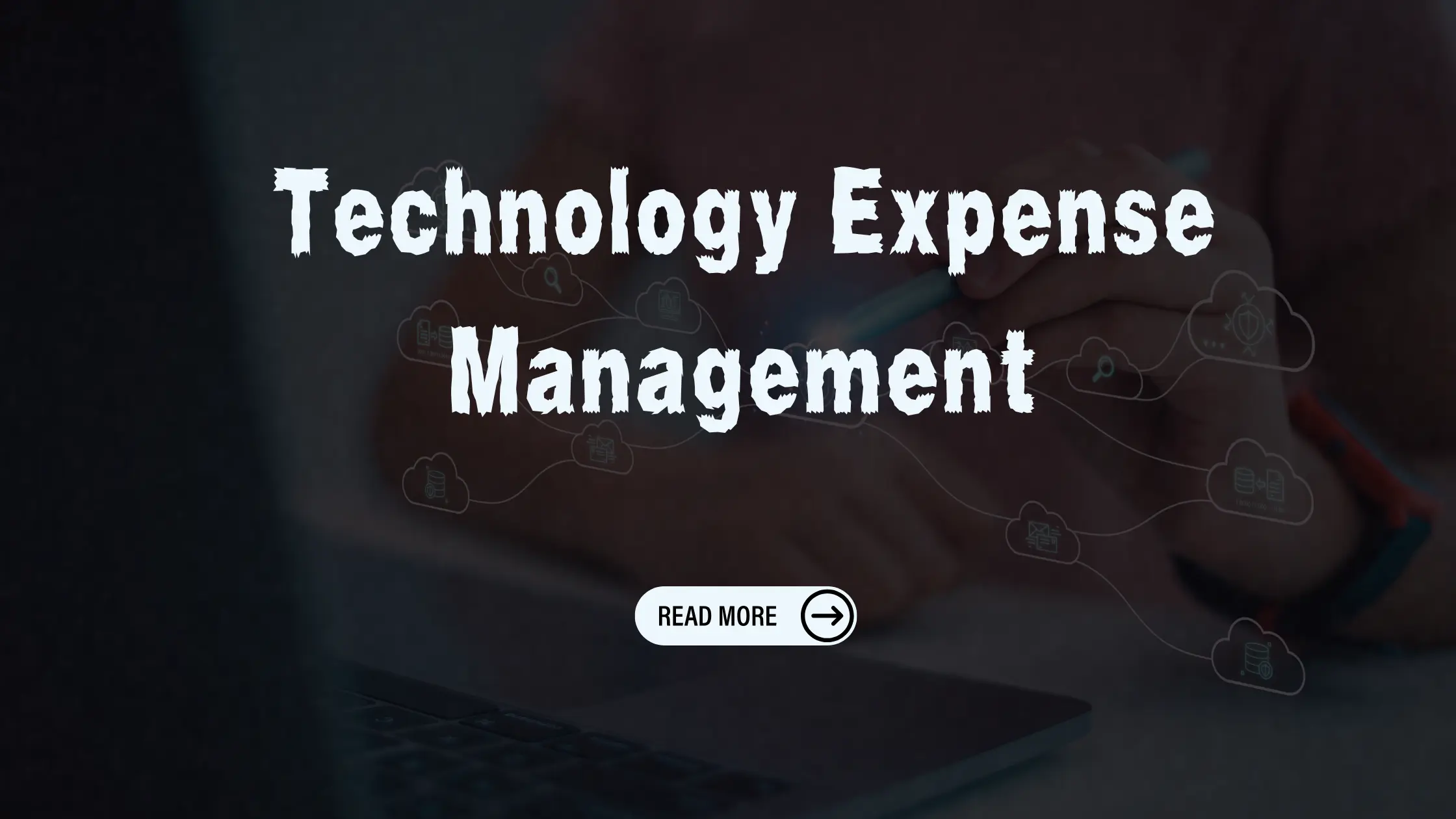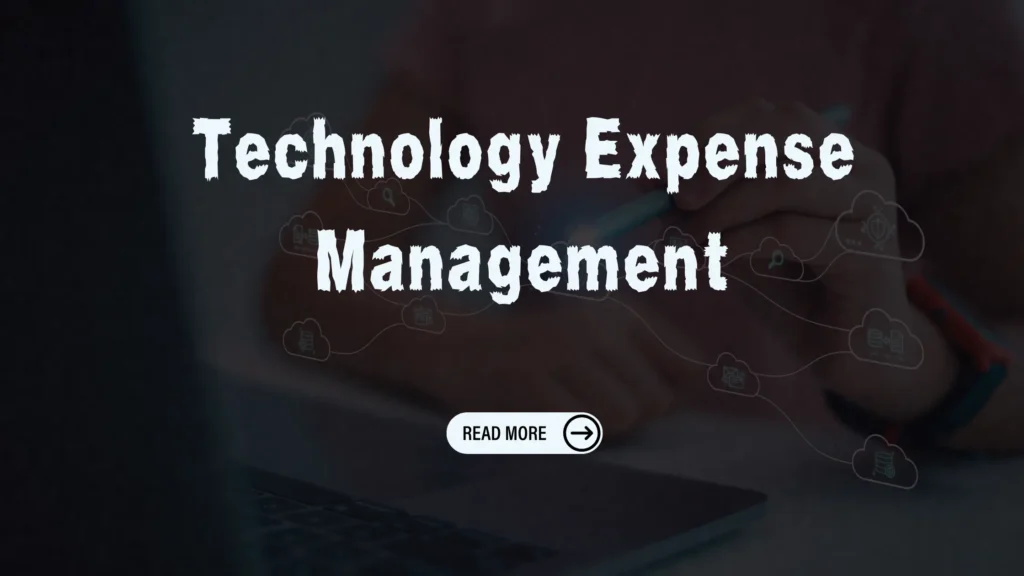 In today’s digital world, businesses rely heavily on technology to stay competitive. However, managing technology expenses effectively can be a daunting challenge. Technology Expense Management (TEM) is the process of monitoring, analyzing, and optimizing IT and telecom costs to improve financial efficiency and business operations. This guide will help you understand TEM, its benefits, best practices, and tools to implement a successful strategy.
In today’s digital world, businesses rely heavily on technology to stay competitive. However, managing technology expenses effectively can be a daunting challenge. Technology Expense Management (TEM) is the process of monitoring, analyzing, and optimizing IT and telecom costs to improve financial efficiency and business operations. This guide will help you understand TEM, its benefits, best practices, and tools to implement a successful strategy.
What is Technology Expense Management?
Technology Expense Management (TEM) is a strategic approach that helps businesses manage their IT and telecom expenses. It includes tracking costs, optimizing usage, negotiating vendor contracts, and eliminating unnecessary spending. TEM is crucial for businesses of all sizes to maintain budget control and maximize ROI on technology investments.
In today’s rapidly evolving digital landscape, effectively managing technology expenses is crucial for organizations aiming to optimize costs, enhance operational efficiency, and drive strategic growth. Technology Expense Management (TEM) encompasses the processes and tools that enable businesses to monitor, control, and reduce their technology-related expenditures.
Understanding Technology Expense Management
Technology Expense Management involves the systematic tracking and analysis of all technology-related costs within an organization. This includes expenses related to hardware, software, cloud services, telecommunications, and other IT services. By implementing TEM practices, organizations can gain visibility into their technology spending, identify cost-saving opportunities, and ensure that investments align with business objectives.
Key Components of Technology Expense Management
-
Expense Tracking and Reporting: Implementing systems to monitor and report on all technology-related expenses, providing transparency and accountability.
-
Contract Management: Overseeing vendor contracts to ensure compliance, negotiate favorable terms, and avoid unnecessary costs.
-
Asset Management: Keeping an inventory of all technology assets to optimize usage and plan for timely upgrades or replacements.
-
Usage Monitoring: Analyzing the utilization of technology services to identify underused resources and eliminate wasteful spending.
-
Budgeting and Forecasting: Developing accurate budgets and forecasts for technology expenses to align with organizational goals and financial planning.
Benefits of Implementing TEM
-
Cost Reduction: By identifying inefficiencies and redundancies, TEM helps in cutting unnecessary expenses.
-
Improved Efficiency: Streamlined processes and better resource allocation lead to enhanced operational performance.
-
Enhanced Decision-Making: Accurate data on technology spending supports informed strategic decisions.
-
Compliance and Risk Management: Ensuring adherence to contracts and regulatory requirements mitigates risks associated with technology investments.
Case Study: Metropolitan Memorial Parks (MMP)
A notable example of effective Technology Expense Management is the Metropolitan Memorial Parks (MMP) in New South Wales, Australia. Formed from the amalgamation of three cemeteries, MMP faced the challenge of consolidating multiple outdated financial systems. By implementing TechnologyOne’s SaaS Plus solution, MMP centralized its finance, procurement, and budgeting systems into a single cloud-based platform. This transition resulted in significant cost savings, streamlined processes, and improved accessibility for staff. The swift implementation, completed within six months, showcases the potential benefits of adopting comprehensive TEM solutions.
Implementing a TEM Strategy
To effectively implement a Technology Expense Management strategy, organizations should:
-
Assess Current Technology Expenses: Conduct a thorough audit of all technology-related costs to establish a baseline.
-
Define Objectives: Set clear goals for cost reduction, efficiency improvements, and compliance.
-
Select Appropriate Tools: Choose TEM solutions that align with the organization’s size, industry, and specific needs.
-
Engage Stakeholders: Involve all relevant departments to ensure comprehensive data collection and buy-in.
-
Monitor and Review: Regularly analyze expense reports and adjust strategies as necessary to achieve desired outcomes.
Why is Technology Expense Management Important?
Implementing an effective TEM strategy offers numerous benefits, including:
1. Cost Savings
-
Identifies unused or redundant services.
-
Optimizes vendor contracts and billing.
-
Reduces overcharges and billing errors.
2. Enhanced Financial Visibility
-
Provides a detailed breakdown of IT and telecom expenses.
-
Helps in accurate budgeting and forecasting.
3. Increased Efficiency
-
Automates expense tracking and reporting.
-
Reduces manual effort and administrative costs.
4. Improved Vendor Management
-
Enables better negotiations with vendors.
-
Ensures compliance with service-level agreements (SLAs).
5. Better Decision Making
-
Provides data-driven insights for strategic planning.
-
Helps businesses align technology investments with business goals.
Key Components of Technology Expense Management
1. Expense Tracking and Analysis
-
Regularly monitor IT and telecom bills.
-
Identify cost trends and anomalies.
2. Invoice and Contract Management
-
Review vendor invoices for accuracy.
-
Negotiate favorable contract terms with service providers.
3. Asset and Inventory Management
-
Keep track of IT assets, software licenses, and subscriptions.
-
Eliminate redundant or underutilized resources.
4. Usage Optimization
-
Optimize bandwidth and data usage.
-
Adjust service plans based on actual needs.
5. Automation and Reporting
-
Implement TEM software for automated tracking.
-
Generate detailed reports for financial analysis.
Best Practices for Effective Technology Expense Management
1. Centralize Expense Management
-
Consolidate all IT and telecom expenses into a single system.
-
Improve visibility and control over costs.
2. Use TEM Software
-
Invest in reliable TEM tools for automation and analytics.
-
Popular TEM solutions include Tangoe, Calero, and Cass Information Systems.
3. Regularly Audit Expenses
-
Conduct periodic reviews to detect billing errors and cost inefficiencies.
-
Ensure compliance with contracts and agreements.
4. Negotiate Vendor Contracts
-
Compare pricing from multiple providers.
-
Negotiate better rates based on market trends and business needs.
5. Train Employees on Cost Management
-
Educate staff on responsible technology usage.
-
Implement policies to reduce unnecessary expenses.
Top Technology Expense Management Tools
To streamline your TEM strategy, consider using these top-rated TEM solutions:
-
Tangoe – Comprehensive expense management with automation.
-
Calero – Advanced analytics for telecom and cloud cost optimization.
-
Cass Information Systems – Provides invoice auditing and vendor management.
-
Brightfin – Mobile and IT expense management platform.
-
Sakon – Offers visibility into IT spending and optimization opportunities.
Conclusion
Technology Expense Management is essential for businesses looking to reduce costs, improve efficiency, and gain better financial control over their IT expenses. By implementing best practices and using the right TEM tools, businesses can achieve significant cost savings and operational improvements. Start optimizing your technology expenses today and drive better business outcomes!


